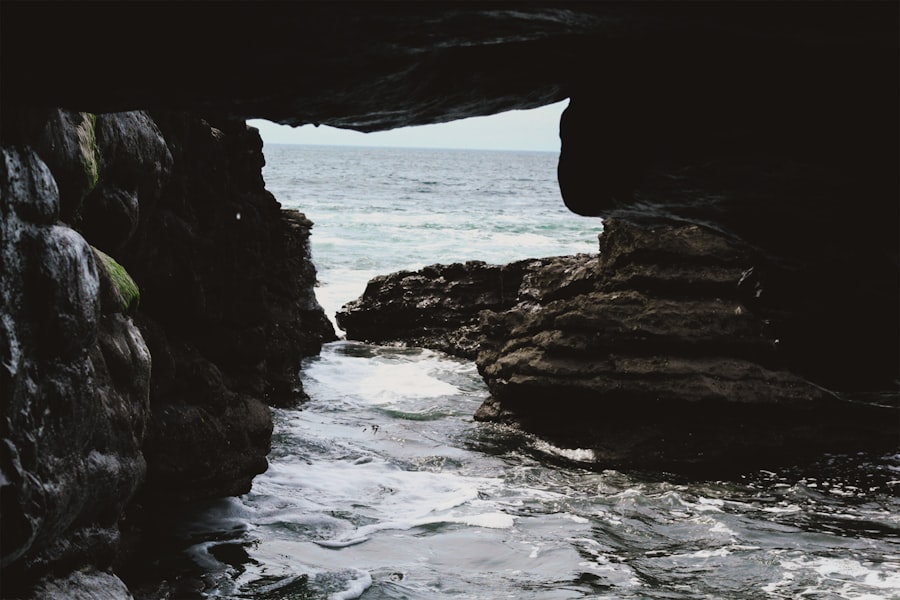The Drake Passage, a body of water that separates South America from Antarctica, is renowned for its tumultuous seas and unpredictable weather. Stretching approximately 600 miles, this passage is often considered one of the most challenging maritime routes in the world. It is named after Sir Francis Drake, the English explorer who navigated these waters in the late 16th century.
The passage is not only significant for its geographical location but also for its ecological importance, serving as a vital corridor for marine life and a critical area for scientific research. Navigating the Drake Passage is an experience that many adventurers seek, but it is not without its challenges. The convergence of the Atlantic and Pacific Oceans creates strong currents and high waves, making it a formidable crossing for even the most seasoned sailors.
The passage is notorious for its rough seas, which can lead to a bumpy ride that tests the mettle of travelers. Understanding the dynamics of this waterway is essential for anyone planning to embark on a journey through it, as it sets the stage for what to expect during the crossing.
Key Takeaways
- The Drake Passage is a body of water between South America’s Cape Horn and the South Shetland Islands of Antarctica, known for its rough seas and challenging sailing conditions.
- The best time to cross the Drake Passage is during the austral summer (November to March) when the weather is milder and the seas are calmer.
- Essential items to pack for the journey include motion sickness medication, warm and waterproof clothing, sturdy footwear, and binoculars for wildlife spotting.
- Preparing for sea sickness involves staying hydrated, getting plenty of rest, and choosing a cabin in the middle of the ship where motion is minimized.
- Safety precautions on board include attending the mandatory safety briefing, following the instructions of the crew, and being aware of the location of life jackets and emergency exits.
- The Drake Passage offers abundant wildlife spotting opportunities, including sightings of whales, seals, penguins, and various seabirds.
- Activities and entertainment on the ship may include lectures by naturalists, photography workshops, and social gatherings with fellow passengers.
- Navigating the weather conditions in the Drake Passage requires flexibility and preparedness for potential delays due to rough seas or adverse weather.
- Capturing the beauty of the passage can be done through photography, sketching, or simply taking in the breathtaking scenery from the deck of the ship.
- Making the most of the journey involves immersing oneself in the experience, participating in onboard activities, and embracing the unique opportunity to explore one of the world’s most remote and pristine regions.
- Arriving at your destination in Antarctica marks the culmination of an unforgettable journey across the Drake Passage, and the beginning of an extraordinary adventure in the white continent.
Choosing the Right Time to Cross
Timing is crucial when planning a crossing of the Drake Passage. The best time to embark on this journey is during the Antarctic summer, which typically spans from late October to early March. During these months, the weather tends to be milder, and the chances of encountering severe storms are significantly reduced.
Travelers who choose to cross during this period are more likely to enjoy calmer seas and clearer skies, enhancing their overall experience. However, even during the summer months, conditions can change rapidly. It is essential for travelers to remain flexible and prepared for varying weather patterns.
Some may prefer to cross during the shoulder seasons of late spring or early autumn, when fewer tourists are present, offering a more intimate experience with nature. Regardless of when one chooses to cross, staying informed about weather forecasts and sea conditions is vital for ensuring a safe and enjoyable journey.
Packing Essentials for the Journey

Packing for a journey across the Drake Passage requires careful consideration of both comfort and practicality. Given the unpredictable nature of the weather, travelers should prepare for a range of conditions. Layering is key; packing thermal undergarments, waterproof jackets, and insulated outerwear will help ensure warmth and protection against the elements.
Additionally, sturdy footwear is essential for navigating the ship and any land excursions that may be planned. Beyond clothing, travelers should also consider bringing personal items that enhance their comfort during the crossing. Seasickness remedies, such as ginger tablets or motion sickness bands, can be invaluable on rough days.
A good pair of binoculars can enhance wildlife spotting opportunities, while a camera will help capture the stunning landscapes encountered along the way. By packing thoughtfully, travelers can ensure they are well-equipped to enjoy their adventure across this iconic passage.
Preparing for Sea Sickness
| Method | Effectiveness | Side Effects |
|---|---|---|
| Ginger | Moderate | None |
| Acupressure wristbands | Low | None |
| Medication | High | Drowsiness |
Sea sickness is a common concern for those embarking on a journey through the Drake Passage. The combination of rolling waves and strong currents can lead to discomfort for even those with strong sea legs. To mitigate this issue, travelers should take proactive steps before and during their crossing.
Consulting with a healthcare professional about suitable medications or remedies can provide peace of mind and help prevent nausea. In addition to medication, there are several natural remedies that travelers can explore. Staying hydrated and consuming light meals can help maintain comfort levels while at sea.
It is also advisable to spend time on deck when possible, as fresh air can alleviate feelings of queasiness. By preparing adequately and being mindful of their bodies’ responses to motion, travelers can significantly reduce their chances of experiencing sea sickness during their adventure.
Safety Precautions on Board
Safety should always be a top priority when crossing the Drake Passage. Modern vessels are equipped with advanced safety features and trained crew members who are well-versed in emergency procedures. However, travelers should familiarize themselves with safety protocols before setting sail.
This includes understanding evacuation routes, knowing where life jackets are stored, and participating in safety drills conducted by the crew.
The combination of strong winds and icy waters can create hazardous conditions if one is not careful.
It is advisable to wear appropriate footwear with good grip and to avoid leaning over railings or engaging in risky behavior while enjoying the views. By adhering to safety guidelines and remaining aware of their surroundings, travelers can ensure a secure and enjoyable experience throughout their journey.
Wildlife Spotting Opportunities

One of the most exciting aspects of crossing the Drake Passage is the opportunity to observe diverse wildlife in their natural habitats. The waters are teeming with marine life, including various species of whales, seals, and seabirds. Travelers may be fortunate enough to spot humpback whales breaching or orcas swimming alongside the ship.
The sighting of these majestic creatures can be a highlight of the journey, leaving lasting memories for all who witness them. Birdwatchers will also find plenty to marvel at during their crossing.
Many ships offer guided wildlife spotting sessions led by knowledgeable naturalists who provide insights into the behaviors and characteristics of these animals. Engaging in these activities not only enhances the experience but also fosters a deeper appreciation for the unique ecosystems that thrive in this remote region.
Activities and Entertainment on the Ship
While crossing the Drake Passage can be an exhilarating experience, it is also essential to have activities planned to keep passengers entertained during their time at sea. Most vessels offer a range of onboard amenities designed to enhance comfort and enjoyment. From cozy lounges where travelers can relax with a book to observation decks perfect for taking in panoramic views, there are plenty of options for unwinding.
Educational programs are often available as well, featuring lectures from experts in marine biology, geology, and history related to Antarctica and its surrounding waters. These sessions provide valuable insights into the region’s unique environment and culture while fostering a sense of community among passengers. Evening entertainment may include movie screenings or themed dinners that celebrate local cuisine, ensuring that there is never a dull moment during the crossing.
Navigating the Weather Conditions
Weather conditions in the Drake Passage can be notoriously unpredictable, making it essential for travelers to stay informed throughout their journey. The region experiences rapid changes in temperature and wind patterns that can affect sea conditions dramatically. Passengers should be prepared for anything from sunny skies to sudden storms, which may require adjustments in plans or activities.
To navigate these conditions effectively, travelers should rely on updates from the ship’s crew regarding weather forecasts and sea state reports. Dressing in layers allows individuals to adapt quickly to changing temperatures while remaining comfortable on deck or indoors. By maintaining flexibility in their plans and being prepared for various weather scenarios, travelers can make the most of their time spent in this remarkable region.
Capturing the Beauty of the Passage
The Drake Passage offers breathtaking vistas that beckon travelers to capture its beauty through photography. From dramatic seascapes featuring towering waves to serene moments when calm waters reflect stunning sunsets, there are countless opportunities for stunning shots along the way. Travelers should ensure they have their cameras ready at all times, as wildlife encounters can happen unexpectedly.
To enhance photography skills while at sea, many ships offer workshops led by professional photographers who provide tips on capturing dynamic images in challenging conditions. Learning about composition, lighting techniques, and how to photograph moving subjects can elevate one’s photography game significantly. By taking advantage of these resources, travelers can return home with stunning visual memories of their journey through this iconic passage.
Making the Most of the Journey
To truly make the most of a journey across the Drake Passage, travelers should embrace every moment—both on board and off. Engaging with fellow passengers fosters camaraderie and shared experiences that enrich the adventure. Whether sharing stories over meals or participating in group activities, building connections with others adds depth to the journey.
Additionally, taking time to reflect on personal experiences while at sea can enhance appreciation for this unique environment. Journaling or sketching scenes from nature allows individuals to process their thoughts and feelings about their adventure more deeply. By immersing themselves fully in both social interactions and personal reflections, travelers can create lasting memories that extend beyond just photographs.
Arriving at Your Destination
As travelers approach their destination after crossing the Drake Passage, excitement builds for what lies ahead. The arrival marks not just an end but also a new beginning filled with exploration opportunities in Antarctica or other nearby regions. Disembarking from the ship often comes with a sense of accomplishment after navigating one of nature’s most challenging waterways.
Upon arrival, travelers will find themselves surrounded by breathtaking landscapes characterized by towering icebergs and pristine wilderness. Guided excursions await those eager to explore further—whether it be hiking on glaciers or visiting research stations inhabited by scientists dedicated to studying this unique environment. The journey through the Drake Passage serves as an unforgettable prelude to an adventure filled with discovery and wonder in one of Earth’s last frontiers.
The Drake Passage, known for its turbulent waters, often raises the question of whether it ever experiences calm conditions. For those interested in exploring more about the geographical and environmental aspects of such intriguing locations, a related article can be found on MyGeoQuest. This resource provides insights into various geographical phenomena and can be accessed through this link. The article delves into the dynamics of the Drake Passage and other fascinating geographical features, offering a comprehensive understanding of these natural wonders.
WATCH NOW! Drake Passage: Earth’s Deadliest Waters Revealed
FAQs
What is the Drake Passage?
The Drake Passage is the body of water between the southern tip of South America and the northern tip of the Antarctic Peninsula. It is known for its notoriously rough and unpredictable seas.
Is the Drake Passage ever calm?
The Drake Passage is rarely calm due to its exposure to strong westerly winds and the Antarctic Circumpolar Current. It is known for its rough seas and challenging sailing conditions.
Are there any times when the Drake Passage is calmer?
While the Drake Passage is generally rough, there may be brief periods of relatively calm weather. However, these calm periods are rare and unpredictable.
What are the typical sea conditions in the Drake Passage?
The Drake Passage is known for its rough seas, with large swells and strong winds being common. It is considered one of the most challenging stretches of water for sailors and can be prone to extreme weather conditions.
Are there any alternative routes to avoid the Drake Passage’s rough seas?
There are no alternative routes to completely avoid the Drake Passage when traveling between South America and Antarctica. However, some cruise ships and vessels may choose to take a more northerly route through the Beagle Channel and around Cape Horn to minimize exposure to the worst of the Drake Passage’s conditions.
